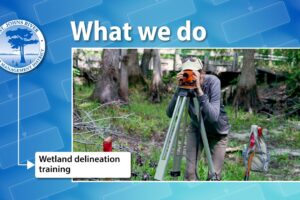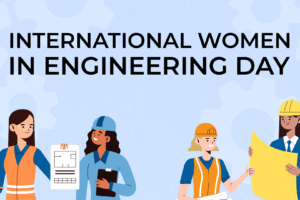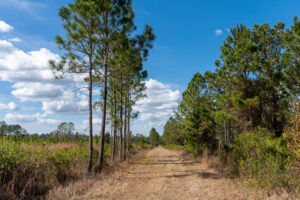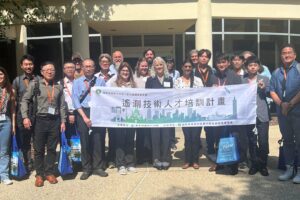Fire for the future: How a carefully planned burn is helping Florida’s wildlands thrive
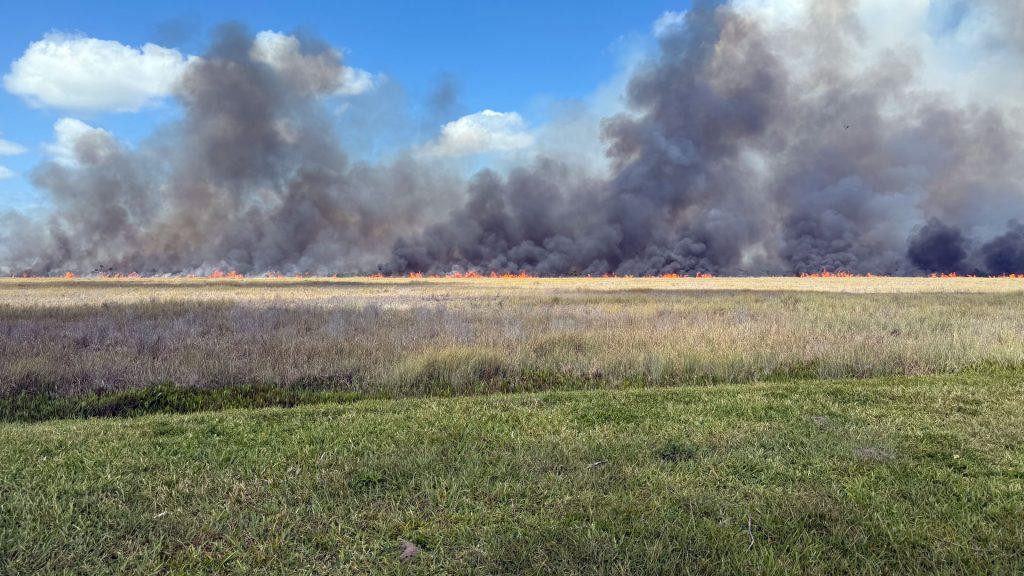
A prescribed burn helps restore native habitat and reduce wildfire risk by mimicking natural fire cycles.
On a warm spring morning—Friday, April 4, 2025—smoke gently curled into the sky above Brevard County. But this wasn’t cause for alarm. In fact, it was a sign of good land stewardship. The District was conducting a 1,380-acre prescribed fire at Three Forks Conservation Area, just west of the Thomas O. Lawton Recreation Area. This wasn’t a wildfire. It was a fire with a purpose—a carefully planned, intentionally set burn aimed at protecting both nature and nearby communities.
Just days later, on Thursday, April 10, another prescribed fire was conducted in the same general area, farther south. That burn covered approximately 8,000 acres and was part of the District’s ongoing efforts to restore natural habitats, reduce wildfire risk, and promote ecological health across the region.
Long before highways and neighborhoods crisscrossed Florida, lightning would strike causing fires to sweep freely across the vast landscape. These fires helped shape the ecosystems we now treasure—pinewoods, prairies and marshes filled with plants and animals that depend on fire to survive. But today, wildfires can’t be allowed to burn unchecked. With homes and businesses close by, they pose a serious threat. That’s where prescribed fire comes in—a modern solution that honors an ancient natural process.
Both prescribed fires served a crucial role in the Indian River Lagoon and the Upper St. Johns River Basin, which encompasses all of Brevard and Indian River counties with parts of Volusia, Osceola and Okeechobee counties. By removing excess vegetation—also called “fuel”—these burns help reduce the risk of destructive wildfires, restore and maintain fire-adapted habitats, recycle nutrients into the soil for new plant growth, control invasive species and tree diseases and enhance scenic views and biodiversity—all of this, while improving safety for nearby residents.
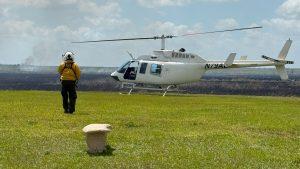
Land Manager Jonny Baker boards a helicopter for an aerial survey of conservation lands and prescribed burn areas.
“As responsible stewards of the land, we aim to maintain natural fire cycles that native plants and wildlife depend on,” said Jonny Baker, District Land Manager in the Indian River Lagoon and Upper St. Johns River Basin. “Prescribed fire allows us to carry out this essential ecological process, supporting healthy ecosystems while also reducing the risk of severe wildfires.”
Every prescribed fire conducted by the District is thoroughly planned. Before ignition, land managers closely monitor weather conditions, wind direction and humidity to ensure the burn is safe and effective. Special care is taken to minimize the impact of smoke to people, homes and nearby roads. Yes, some short-term nuisances like smoke or ash may occur—but they come with long-term benefits: healthier forests, stronger wildlife habitats and reduced wildfire danger for everyone.
Prescribed fire is not just smart science; it’s protected and encouraged by Florida law. In 1990, the Florida Legislature passed the Prescribed Fire Act, giving legal support and liability protection to responsible land managers using prescribed fire. In 1997, Florida’s governor and cabinet established Prescribed Fire Awareness Week, celebrated during the last week of January each year. All 67 Florida counties have passed resolutions supporting the use of prescribed fire as a safe, effective land management tool.
With more than 430,000 acres of public land actively managed by the District, land stewardship is all about long-term thinking. Prescribed fires like the ones at Three Forks aren’t just responses to current conditions—they’re proactive tools for shaping healthier ecosystems and safer communities well into the future. So, the next time you see smoke on the horizon, remember: sometimes, fire is one of the most effective ways to protect Florida’s natural treasures.


